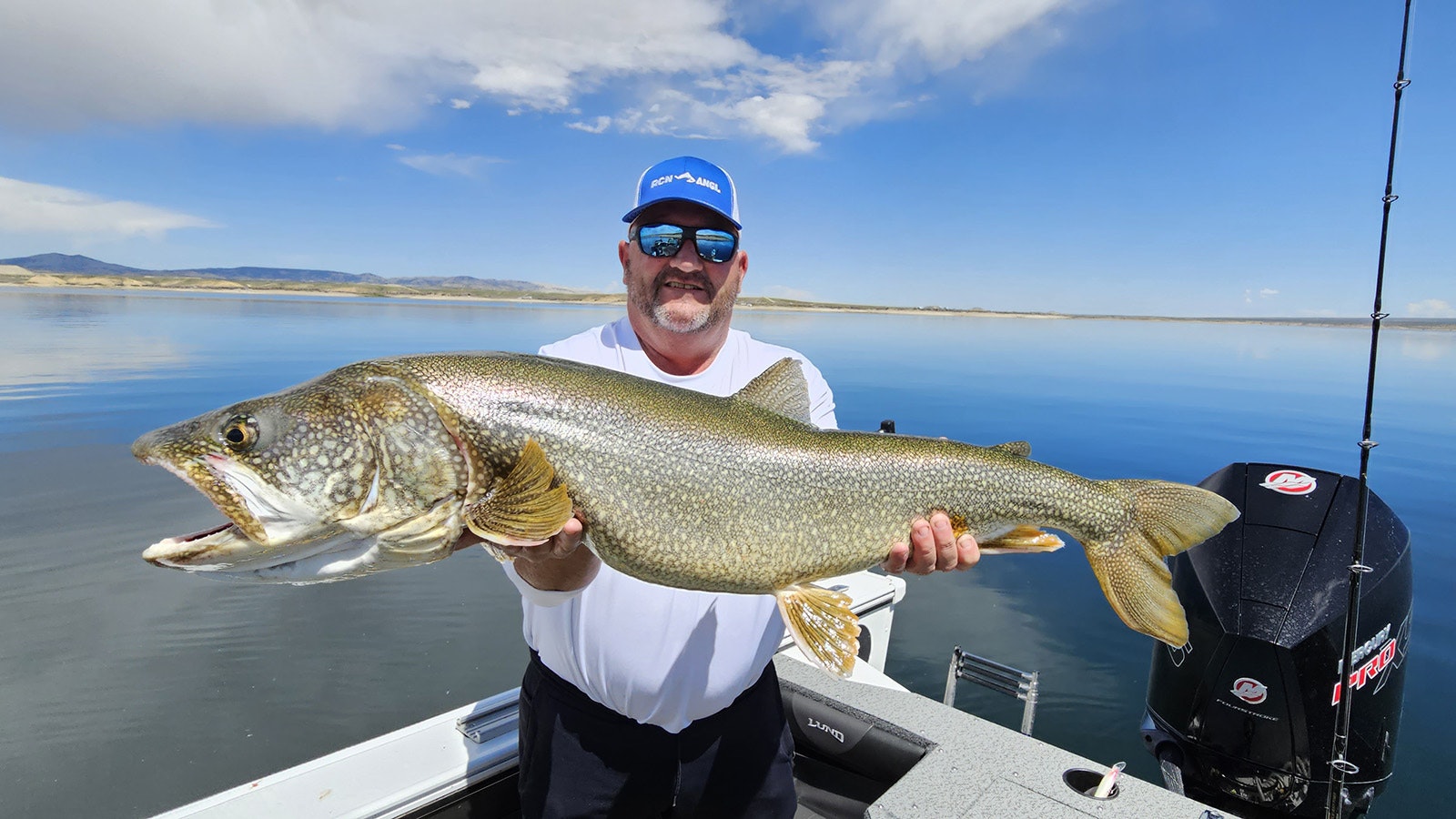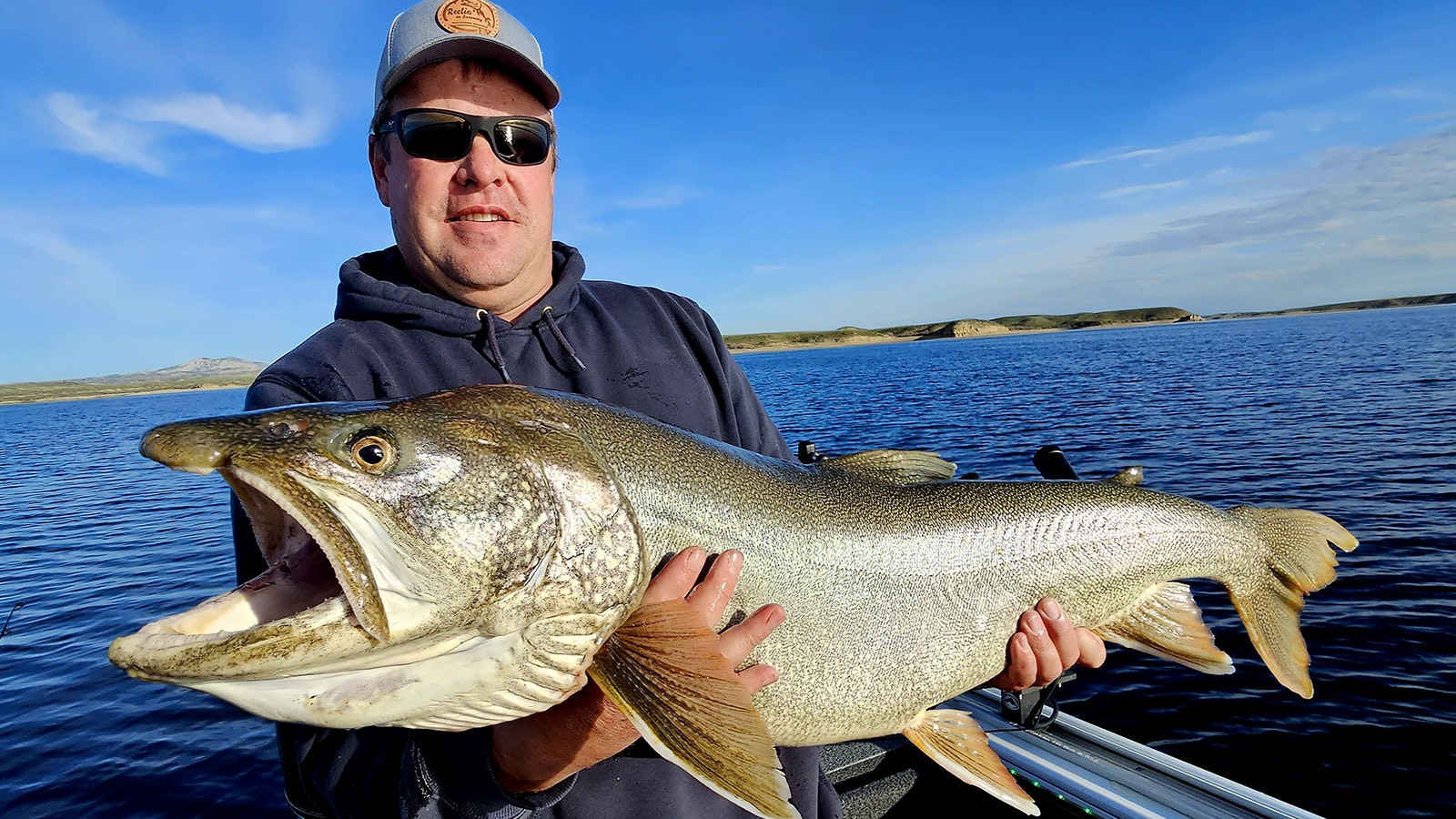How to keep fishermen interested in Flaming Gorge Reservoir when numbers of their favorite fish are dwindling is a huge challenge for the biologists who manage this 91-mile-long body of water that straddles the border of Wyoming and Utah.
Fisheries managers have for several years supported the idea that fishermen actively harvesting small lake trout from Flaming Gorge will help kokanee salmon continue to thrive there.
But with dwindling kokanee numbers this year, enthusiasm among fishermen may decline, and that’s pushed managers of the reservoir to consider more aggressive measures to kill lake trout, such as large-scale netting and commercial fishing.
Where Are The Kokanee?
Kokanee are the main forage for lake trout in the reservoir, and kokanee also are the main reason thousands of fishermen seek out Flaming Gorge. Their rich, red flesh is prized and they’re fairly easy to catch.
A Utah fisheries biologist told Cowboy State Daily he suspects that when there’s not much for them to eat, lake trout are more willing to hit a lure.
In early June, Tony Valdez, owner of Buckboard Marina, raised numerous concerns about the future of the reservoir and leveled accusations at the managers of the fishery.
During a two-day fishing tournament held in May at Lucerne Marina, not a single kokanee was weighed, Valdez said.
In a letter to the Wyoming Game and Fish Department, Valdez alleges the reservoir has been mismanaged and the fishery is collapsing because of a lack of forage.
Further, Valdez questions whether it’s sustainable to keep planting more than 1.5 million kokanee in the reservoir every year as a forage base for lake trout.
Game And Fish Yet To Weigh In
Wyoming Game and Fish officials said they are working on a response to several questions posed by Cowboy State Daily about the present condition and future of the fishery.
Wyoming Game and Fish was also sent several photographs that Cowboy State Daily received from Valdez of large lake trout caught this spring that appear emaciated. Game and Fish was asked to evaluate the photos, but has not yet responded.
Cowboy State Daily contacted Wyoming Game and Fish on June 8. As of Friday, the agency said its response was not yet ready.
‘Very Uncommon’
“People are catching lots of lake trout,” said Ryan Mosley, a fisheries biologist and Flaming Gorge Project Leader for the Utah Division of Wildlife Resources. “It makes sense that when there’s not much for them to eat they are more willing to hit a lure.”
Biologists from both states are cooperating on a lake trout survey. Last fall 550 small lake trout, called pups, were tagged and released.
Fishermen who catch one of the tagged fish are encouraged to report the catch, and so far about 50 of those tagged fish have been caught and reported, Mosley said.
Earlier this year, Mosley caught a large lake trout in a gill net that had a 12-inch smallmouth bass in its stomach.
Mosley, who has worked as a biologist at Flaming Gorge for more than 20 years called it “very uncommon,” saying he’s only found smallmouth bass in lake trout stomachs twice in that time.
Lots Of Suckers
Mosley was reluctant to address Valdez’s individual allegations.
However, with regard to forage in the reservoir, he said there’s no shortage of white suckers in Flaming Gorge.
“What I will tell you is Flaming Gorge is full of white suckers,” he said. “We hardly ever set a gill net without catching them and sometimes they overrun our nets.”
Wyoming Game and Fish posted the following explanation June 19:
“Eventually, predators consumed the non-game fish populations, freeing up the zooplankton for sportfish. As the populations of the non-game fish declined, the lake trout transitioned to foraging on kokanee. Fisheries managers aimed to maximize the sportfish community by utilizing kokanee as forage for lake trout and as a renowned trophy kokanee fishery without sacrificing a portion of the zooplankton community on non-game fish.”
While that worked from the early 1990s until about 2019, the agency says that drawdowns on the reservoir and large numbers of small-sized lake trout “took a toll on the juvenile trout and kokanee populations starting around 2020-21.”

Get The Trout Out
Mosley said harvesting lake trout is critical to the future of Flaming Gorge as a kokanee fishery.
“We need harvest on lake trout to keep the kokanee population sustainable,” he said. “But we have to balance the number of predators. This problem is not uncommon in lake trout/kokanee fisheries in the Intermountain West.”
Despite the heavy predation on kokanee, lake managers have doubled down on stocking kokanee. A June 22 post on the UDWR website states that more kokanee were stocked during 2022 than any other year in the history of the reservoir.
They expect those stocked fish “will be available for anglers in the coming years.”
According to Wyoming Game and Fish, the goal for Flaming Gorge is to reduce the number of pups while maintaining the existing trophy lake trout fishery. As the number of pups is reduced, “the survival of stocked and wild sportfish and recruitment to the angler will improve.”
“We appreciate that anglers' are concerned about the Flaming Gorge fishery,” the agency says. “Most Game and Fish employees are avid anglers, and many of us spend hundreds of hours a year pursuing the variety of game fish in the reservoir.”







